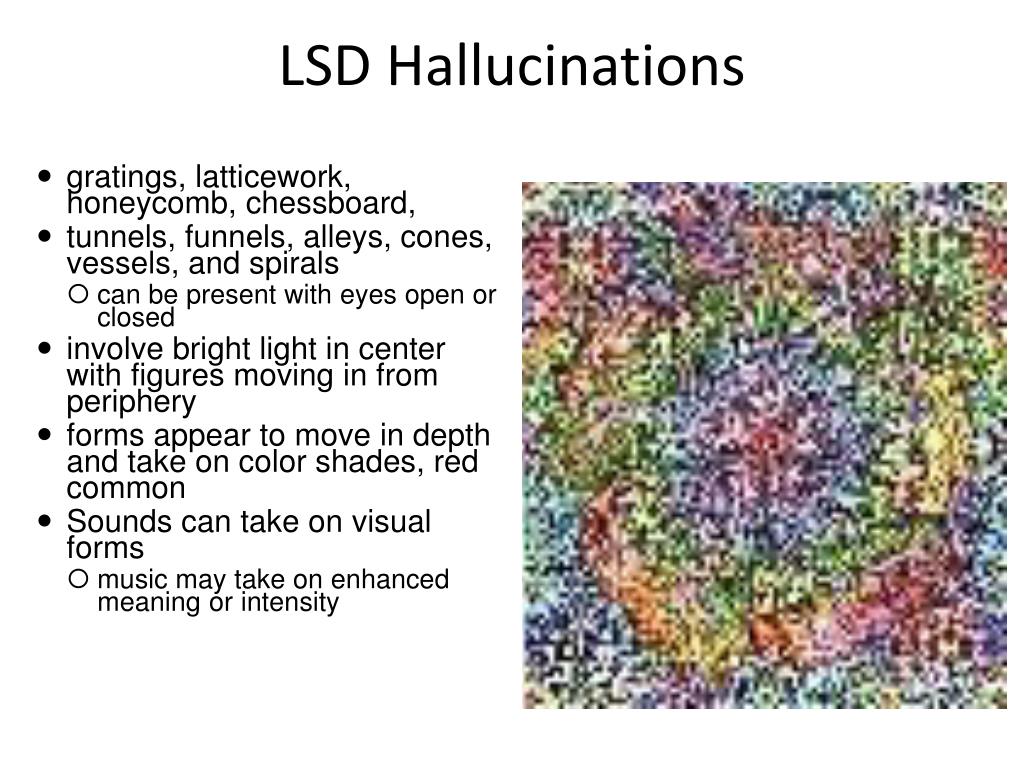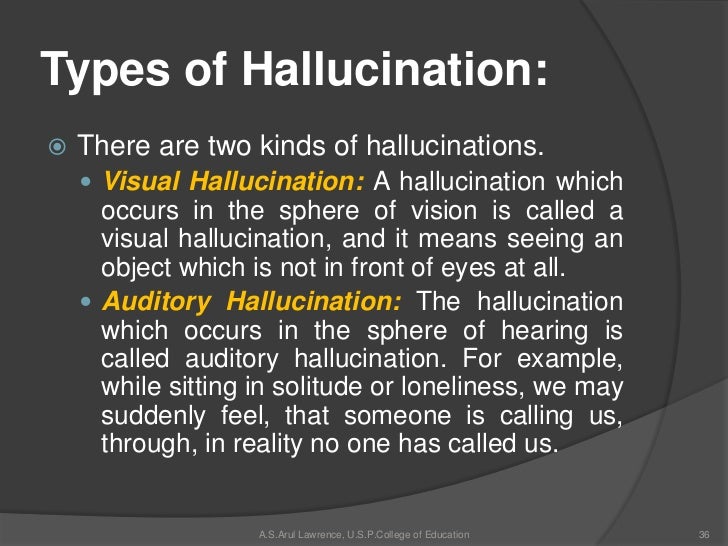

- #Most common type of hallucination skin#
- #Most common type of hallucination professional#
Bizarre delusions are delusional thoughts that could not be true under normal circumstances.
Bizarre Delusions: While most delusions can be considered “bizarre,” the word means something different in this context. Grandiose Delusions: Beliefs that center around being an important person, like believing that everyone is jealous of you. Religious Delusions: Delusions involving religious themes or subject matter. Delusions of Infidelity: Believing that their partner or spouse is cheating or not being faithful. Persecutory Delusions: Believing that someone or something is out to get them, most often the government. #Most common type of hallucination professional#
Delusions can be about anything, and they can persist for months at a time without professional mental health treatment. And when evaluating delusions vs hallucinations, it’s important to recognize the different types. There are many different types of delusions, all with their causes and characteristics. Below are some common types of delusions and delusional thoughts, along with conditions that can cause them. Or someone living with schizophrenia delusions might believe that they’re being watched by a mysterious third party.īut when examining delusions vs hallucinations, it’s important to remember that each issue comes in many different forms. Importantly, when evaluating a delusion vs hallucination, these beliefs do not reflect external stimuli like seeing or hearing things.įor example, someone who is suffering from dementia may believe that family members are stealing from them, which is a delusion. This is what marks it as a mental health issue, since a person who is simply wrong can usually be convinced. Someone who is delusional will believe in the delusion very firmly, even when shown evidence to the contrary. This is another common misconception in the delusions vs hallucinations conversation. While delusional thoughts can often involve things that feel real but aren’t, they are not the same as a hallucination.
Schizophrenia-more than 70% of people with schizophrenia have visual hallucinations, and nearly 60% experience auditory hallucinations.ĭelusions are beliefs that do not match up with reality. The most common being:Ĭonfidential Form | Mental Health Screening Several conditions can cause hallucinations. This type of hallucination involves tasting something in your mouth that has no source. 
Gustatory Hallucinations: While rare, gustatory (taste) hallucinations can occur.
#Most common type of hallucination skin#
An example could be feeling bugs crawling on the skin when there are none.
 Tactile Hallucinations: Feeling something touching or crawling on the skin. Olfactory Hallucinations: Smelling something that isn’t really there. Auditory hallucinations are common in people with schizophrenia. Auditory Hallucinations: Hearing voices, music, or sounds that are not real.
Tactile Hallucinations: Feeling something touching or crawling on the skin. Olfactory Hallucinations: Smelling something that isn’t really there. Auditory hallucinations are common in people with schizophrenia. Auditory Hallucinations: Hearing voices, music, or sounds that are not real. 
An example could be seeing a deceased loved one sitting in the room. Typically, visual hallucinations involve seeing animals or people when there are none around.
Visual Hallucinations: The most common type of hallucination. Below are the most common types of hallucinations, and some examples of what they can be. Common Types of HallucinationsĪs previously mentioned, hallucinations can involve any of the body’s senses. And while most people think of visual experiences when they think of hallucinations, they can involve any of the body’s senses. For example, both can be caused by medications, substance abuse, or certain health conditions. When analyzing delusions vs hallucinations, it’s interesting to note that the causes are similar. Hallucinations are sensory experiences that do not have an external cause. But before we dive into delusions vs hallucinations, let’s delve into what hallucinations are and review some common examples of hallucinations. Today, we’re going to review the difference between hallucinations and delusions, and what you should know if you’re experiencing either or both of these symptoms. But when it comes to delusions vs hallucinations, what’s really the difference? While both delusions and hallucinations alter a person’s perception of reality, these mental illness symptoms are not interchangeable. Delusions and hallucinations are often lumped together when discussing different mental conditions, but they’re not the same.








 0 kommentar(er)
0 kommentar(er)
